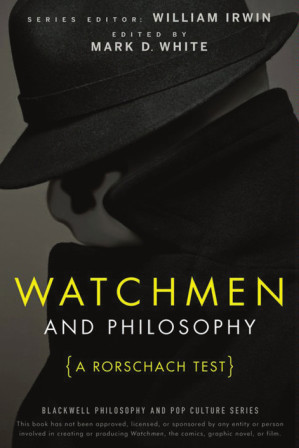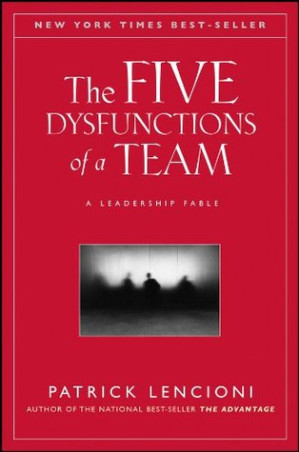The mask reveals more than it hides—superheroes as psychological case studies.
Rorschach's journal entry: 'This city is afraid of me. I have seen its true face.'

Book summary
by Alan Moore & Dave Gibbons
The groundbreaking graphic novel that redefined superhero storytelling
Deconstructed superheroes question morality in dystopia
Topics
Read one chapter at a time, paying equal attention to both text and visual storytelling. Use Readever to analyze the nine-panel grid structure and recurring visual motifs. After each chapter, reflect on which character's moral philosophy resonates most with you. Highlight passages that challenge your assumptions about heroism and justice, and use the AI to explore the Cold War context that shapes the narrative's political anxiety.
Things to know before reading
Watchmen unfolds in an alternate 1985 America where costumed vigilantes were once real but are now outlawed. When one of their former comrades is murdered, a group of retired heroes must investigate while confronting their own moral compromises and the looming threat of nuclear war. Alan Moore and Dave Gibbons' masterpiece deconstructs the superhero genre, exploring complex themes of power, morality, and the nature of heroism in a world teetering on the brink of annihilation.
*Watchmen* dismantles superhero tropes to examine the psychological and moral consequences of power, fear, and the compromises we make for peace.
Rorschach's journal entry: 'This city is afraid of me. I have seen its true face.'
Ozymandias's chilling justification: 'I did the right thing, didn't I? It all worked out in the end.'
Doctor Manhattan's realization: 'A live body and a dead body contain the same number of particles. Structurally, there's no discernible difference.'
Ready to continue? Launch the Readever reader and keep turning pages without paying a cent.
This summary reveals how Moore and Gibbons transformed the superhero genre into a sophisticated exploration of moral philosophy, political commentary, and human psychology. You'll understand why this graphic novel remains essential reading for anyone interested in storytelling, ethics, or the intersection of art and society.
Key idea 1
Rorschach's journal entry: 'This city is afraid of me. I have seen its true face.'
Each character represents a different philosophical approach to justice. Rorschach embodies uncompromising moral absolutism, Doctor Manhattan represents detached rationalism, Ozymandias champions utilitarian calculus, and The Comedian embodies cynical realism. Moore uses these archetypes to explore how different worldviews respond to moral crises, showing that heroism and villainy exist on a spectrum shaped by trauma, power, and perspective.
Remember
Key idea 2
Ozymandias's chilling justification: 'I did the right thing, didn't I? It all worked out in the end.'
The novel's central moral dilemma revolves around utilitarianism versus deontology. Ozymandias orchestrates a fake alien invasion that kills millions to unite humanity against a common threat, believing this sacrifice prevents nuclear annihilation. This forces readers to confront whether mass murder can ever be justified, even for global peace. The question remains unanswered, leaving readers to grapple with the ethical implications.
Remember
Key idea 3
Doctor Manhattan's realization: 'A live body and a dead body contain the same number of particles. Structurally, there's no discernible difference.'
Doctor Manhattan's godlike abilities don't corrupt him in the traditional sense—instead, they alienate him from human concerns. His perception of time as simultaneous rather than linear makes human morality seem arbitrary and insignificant. This exploration of power shows that true corruption isn't about becoming evil, but about losing touch with what makes human experience meaningful.
Remember
Watchmen is set in an alternate 1985 where superheroes changed history—the United States won the Vietnam War, Nixon remains president, and nuclear war with the Soviet Union seems imminent. The story begins with the murder of The Comedian, a government-sponsored hero, which prompts Rorschach to investigate a potential conspiracy against "costumed adventurers."
As Rorschach uncovers clues, he reconnects with former colleagues: the nihilistic Nite Owl, the brilliant but detached Silk Spectre, the godlike Doctor Manhattan, and the world's smartest man, Ozymandias. Their investigation reveals a plot that threatens global stability, forcing each character to confront their past choices and moral principles.
The narrative weaves together multiple timelines, incorporating fictional documents, psychological profiles, and a pirate comic-within-a-comic that mirrors the main themes. This complex structure allows Moore to explore how personal histories shape moral frameworks and how individuals respond when faced with impossible ethical choices.
Open Readever's reader to highlight passages, ask the AI companion questions, and keep exploring without paying a cent.
Watchmen represents a watershed moment in graphic storytelling—a work that elevated comics from entertainment to literature. Moore's writing combines philosophical depth with psychological insight, while Gibbons' artwork masterfully employs visual storytelling techniques like the nine-panel grid, recurring motifs, and symbolic color schemes.
The novel's genius lies in its refusal to provide easy answers. Characters who seem heroic reveal profound flaws, while apparent villains articulate compelling arguments. This moral complexity forces readers to engage actively with the text, questioning their own assumptions about justice, sacrifice, and the nature of good and evil.
Critical Reception: Watchmen won the Hugo Award in 1988—the only graphic novel ever to receive this honor. It was included in Time magazine's "100 Best English-language Novels from 1923 to 2005" and has been praised by critics as one of the most significant works of fiction of the 20th century. The novel's influence extends beyond comics, inspiring filmmakers, writers, and philosophers.
Readers interested in moral philosophy and ethical dilemmas
Comics enthusiasts seeking sophisticated literary works
Students of political science and Cold War history
Writers and artists exploring complex narrative structures
Anyone questioning traditional notions of heroism and justice
Alan Moore is an English writer widely regarded as one of the most influential comic book writers in history. Known for works like V for Vendetta, From Hell, and The League of Extraordinary Gentlemen, Moore has consistently pushed the boundaries of the medium. His writing combines literary sophistication with genre innovation, often exploring complex philosophical and political themes.
Dave Gibbons is a British comic book artist, writer, and letterer best known for his collaboration with Moore on Watchmen. His clean, detailed artwork and innovative panel layouts were essential to the novel's success. Gibbons' background in technical illustration brings a precision to the visual storytelling that complements Moore's dense narrative.
Together, Moore and Gibbons created a work that demonstrated the artistic potential of graphic novels, proving that comics could tackle complex adult themes with the same depth and sophistication as traditional literature.
Build your personalized reading stack
Download full-length ePubs in one click with personal cloud storage.
Blend AI-guided insights with tactile note-taking to accelerate reflection.
Follow curated reading journeys tailored to your goals and time budget.
Sync highlights across devices so lessons stick beyond the page.
Sign in to Readever to keep reading with AI guidance, instant summaries, and synced notes.
Watchmen remains essential reading not just for comics fans, but for anyone interested in the intersection of morality, power, and storytelling. Its exploration of ethical complexity, psychological depth, and political commentary continues to resonate in an increasingly polarized world. The novel challenges readers to confront uncomfortable questions about sacrifice, justice, and the compromises we make for peace, leaving a legacy that continues to influence how we think about heroism and morality.
This extended outline captures Watchmen's most resonant themes, character arcs, and philosophical questions. Use it to revisit moments when characters confront moral absolutes, wrestle with power's psychological effects, and make impossible choices between competing ethical frameworks.
The novel's enduring value lies in its demonstration that complex moral questions rarely have simple answers. Moore and Gibbons invite readers to sit with ambiguity, to question their own moral certainties, and to recognize that heroism and villainy often exist on the same spectrum, separated only by perspective and circumstance.

Chris Guillebeau
Launch profitable microbusinesses with minimal investment and maximum freedom

Patrick Lencioni
Leadership fable about overcoming team dysfunction patterns

Barack Obama
Presidential memoir detailing Obama's journey and first term in office
Start reading Watchmen for free and unlock personalized book journeys with Readever.